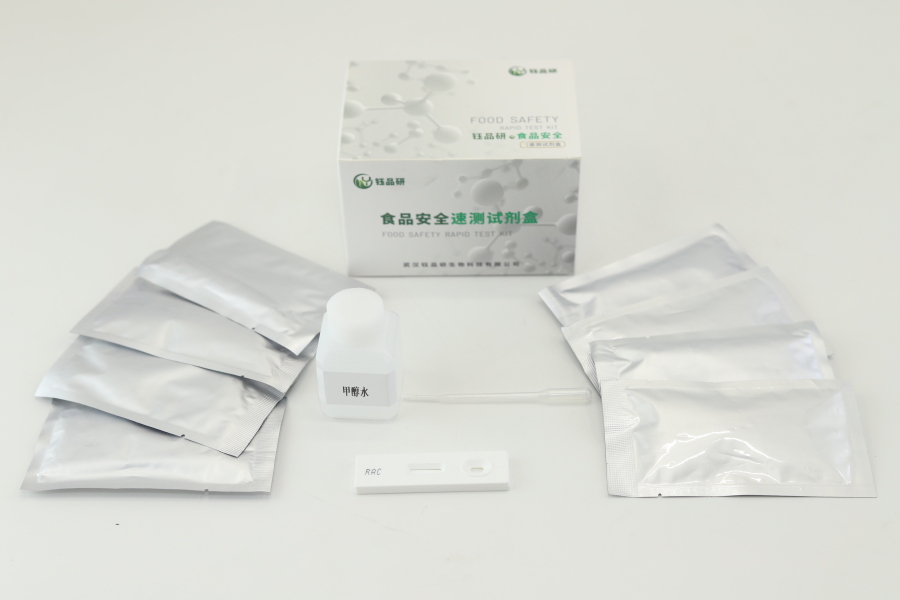In today's increasingly concerned food safety issues, the detection of some illegal additives has become an important link in safeguarding public health. Captopril, as a commonly used antihypertensive drug, may pose a serious threat to human health if it is added to food illegally. In order to quickly and accurately identify such latent risks, the captopril rapid test kit came into being.
Captopril rapid test kit is a rapid detection product based on immunochromatography technology, which is mainly used for qualitative detection of captopril residues in foods (such as meat, aquatic products, dairy products, etc.). Its core principle is to use the specific binding reaction of antigens and antibodies to quickly determine whether a sample contains captopril through the color development results on the test strip.
When used, the operation process is very simple: just take a small amount of sample (such as food after homogenization) and mix it with the extract in the kit, drop the mixture into the detection hole, wait for a period of time (usually 10-30 minutes), and observe the quality control line and detection line on the test strip to obtain the result - two lines are negative (not detected), and one line (only the quality control line is colored) is positive (detected).
Compared with traditional detection methods (such as high-performance liquid chromatography, mass spectrometry, etc.), the captopril rapid test kit has significant advantages: no professional laboratory equipment and complex operations are required, and ordinary personnel can get started with simple training; the detection speed is fast, and the results can be produced within 30 minutes, which can meet the needs of on-site rapid screening; the cost is low, and it is suitable for batch sample detection; at the same time, it is portable and can be used flexibly in scenarios such as grass-roots supervision and enterprise self-inspection.
At present, the captopril rapid test kit has been widely used in food production enterprises for self-inspection of raw materials and finished products, rapid sampling inspection by market supervision departments, daily safety control of catering units, and research institutions' research on the abuse of food additives. Its appearance provides efficient technical support for food safety supervision, helps to detect and avoid the health risks caused by the illegal addition of captopril in a timely manner, and protects the public's "safety on the tip of the tongue". With the continuous optimization of technology, such rapid detection tools will play an increasingly important role in the food safety assurance system, ensuring that the whole chain of food from production to consumption is safe and controllable.


